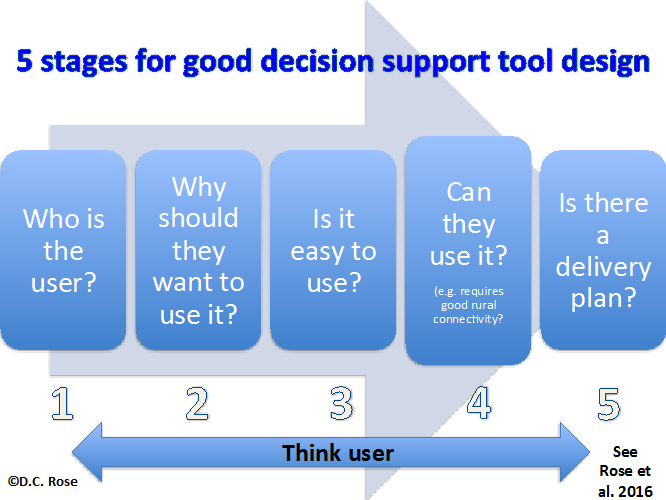Share
A team at the University of Cambridge, together with partners ADAS, Glasgow Caledonian University, and Universities of Exeter and Nottingham, has recently completed a piece of work as part of Defra’s Sustainable Intensification Platform (SIP) on decision support tool use.
The wider SIP aims to increase farm output and competitiveness, whilst providing environmental and social benefits. The piece of work led by Dr David Rose, who is currently working on another project with CSaP, investigated the reasons why farmers and advisers in the UK use decision support tools. An open access paper published in Agricultural Systems presents the results from this study.
The ability to facilitate evidence-based policy and practice is an important facet of environmental research. If evidence is not translated into policy decisions, and implemented on the ground, then little tangible progress is made. Decision support tools, often defined as software-, app-, or web-based products, may provide evidence-based decision-making advice to policy-makers and practitioners in a useable form. These tools guide users through clear decision stages based on evidence, ultimately allowing them to make a more informed decision.
Yet, despite their widespread availability in many sectors, including agriculture and conservation, the uptake of decision support tools has been very low. This is concerning because it means that resources have been wasted in designing a tool that has little tangible impact.
The work led by Dr Rose provides advice for designers about how to design good tools. It also has relevance for government and funders of decision support tool research to ensure that grant-holders are paying attention to the fifteen-point checklist of good practice highlighted in the paper. In order to create the working environment in which these fifteen factors are considered in the design and delivery process, it is suggested that designers and funders consider adopting the five-stage process below:

1) Tools should look and behave differently for different audiences e.g. a tool for a farmer should be different than one for an adviser or policy maker. Different groups have different skills and diverse questions to answer. A tool that doesn’t know its audience is likely to fail. Other user factors to consider: age, cashflow, workflow, computer literacy, embedded habits, farm scale.
2) A designer needs to consider whether the tool is better than current ways of making decisions. Does it beat farmer/adviser knowledge or existing guidance or tools? Does using it lead to tangible benefits?
3) An interface needs to be user-friendly and provide information quickly.
4) A designer needs to consider whether there are barriers to widespread adoption e.g. lack of rural connectivity.
5) Even the most fantastic tool needs marketing. Designers could make use of trusted farmer and adviser networks to enable peer recommendation and knowledge exchange.
Designers of decision support tools in other areas could also benefit from a similar process.
For further information about the project, please contact the lead researcher Dr David Rose at dcr31@cam.ac.uk
(Banner image: Farm, flickr; thumbnail image: California Farm, flickr)
Dr David Rose
University of Reading